Manzanilla de Sanlúcar is, together with fino, probably one of the lightest, driest wines not only of the sherry region but also of the wine world too. Born thanks to the indigenous layer of yeast known as “flor”, and aged in the traditional solera system, manzanilla is a unique wine style, enjoyed by many different wine consumers. Find in this guide answers to questions like what is a manzanilla de Sanlúcar by tracing its history, crafting, the role of the solera system, the “flor” and its tasting profile.
You can deepen your knowledge about this wine by learning more how sherry wines are generally aged and what is the actual role of the “flor”
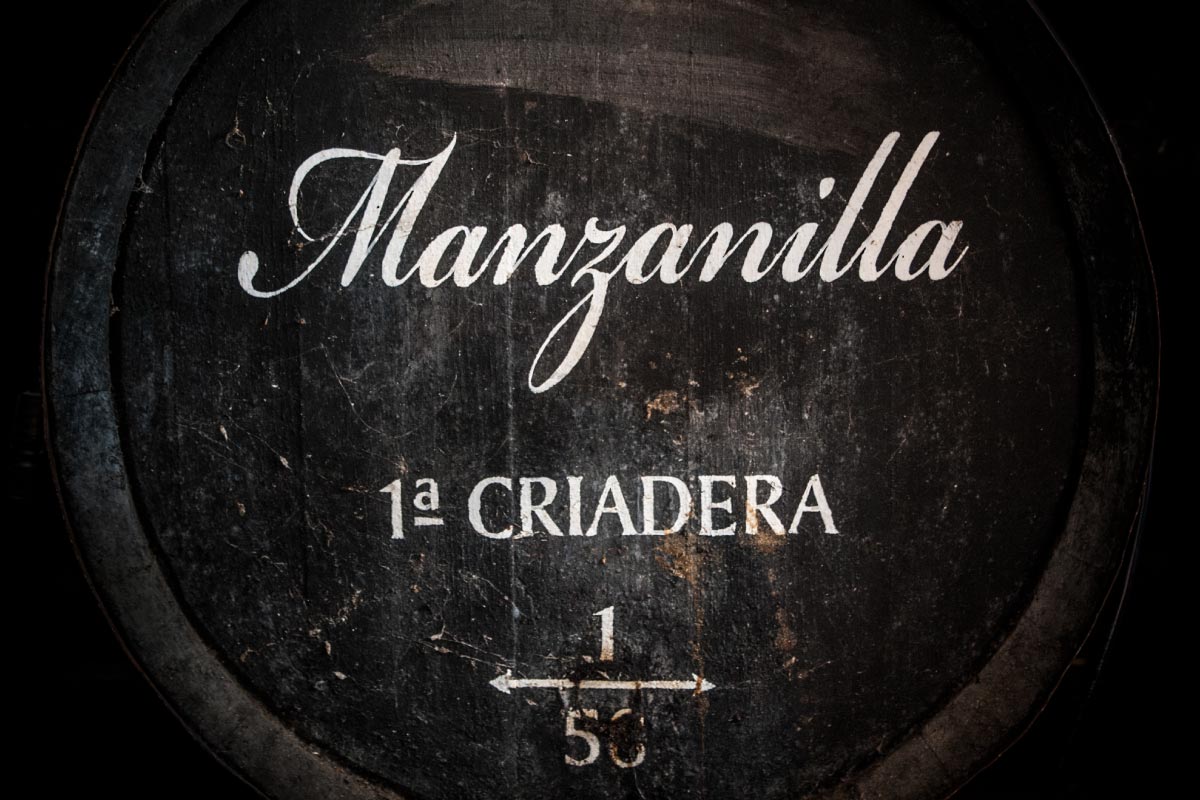
WHAT IS MANZANILLA DE SANLÚCAR?
Manzanilla is a unique expression of biologically aged sherry, exclusively produced in the coastal town of Sanlúcar de Barrameda. Like fino, it’s made from palomino grapes and aged under a veil of “flor”, ending in an unmistakable marine character. Fresh, very dry, and slightly saline, manzanilla is generally described as the most delicate of all sherry styles.
THE UNIQUE ORIGIN OF MANZANILLA: WHY IT’S NAMED AFTER SANLÚCAR
Manzanilla owes both its name and identity to its origin in Sanlúcar de Barrameda, one of the three prominent cities of the region. For centuries, Sanlúcar has been a vital port—once the gateway for trade with the rest of the world and a departure point for explorers like Magellan or Elcano. This constant exchange of goods and ideas helped shape not just the town’s history, but its wine culture as well.

The wine aged in Sanlúcar developed a reputation of its own: lighter, fresher, and salt-kissed, a direct reflection of the town’s oceanic air and cool, humid conditions. Locals began referring to this unique style by a name that captured both its finesse and aromatic character, creating a direct resemblance to the wild chamomile flower (known as ”manzanilla”) often found along the coast and in its delicate aromatics. Over time, the term stuck, becoming synonymous with the town itself, as a result turning Sanlúcar home of this briny, light and lively wine.
WHERE DOES THE MANZANILLA SYMBOL COME FROM?
Beyond its name, manzanilla is always identified with a certain symbol in the cellar. Traditionally, barrels containing young palomino wine that began their life under a “flor” were marked for manzanilla (or fino, in the rest of the wine DO) production. This guided the upcoming aging process for that manzanilla leading the young wine’s transition to a light, very dry style of wine.

DIFFERENCES BETWEEN MANZANILLA AND FINO SHERRY
At first glance, manzanilla and fino may seem almost the same: they are crafted with the same grape variety, vinification and aging methods, and even similar alcohol content. But subtle environmental differences create significant contrasts. Fino, mostly aged in Jerez or El Puerto de Santa María, shows more structure, almond and chalk notes, and a slightly bitter edge. Manzanilla, by contrast, is lighter on the palate, with pronounced floral hints (like chamomile), sea breeze salinity, and a breezier, more delicate finish. It’s finesse versus firmness—both elegant, but in very different ways. And while both styles undergo biological aging under flor and share many similarities, manzanilla is exclusively produced in Sanlúcar de Barrameda, where the coastal microclimate imparts a lighter, more saline profile. Manzanilla tends to be more floral and delicate than fino, which is often more robust and structured.
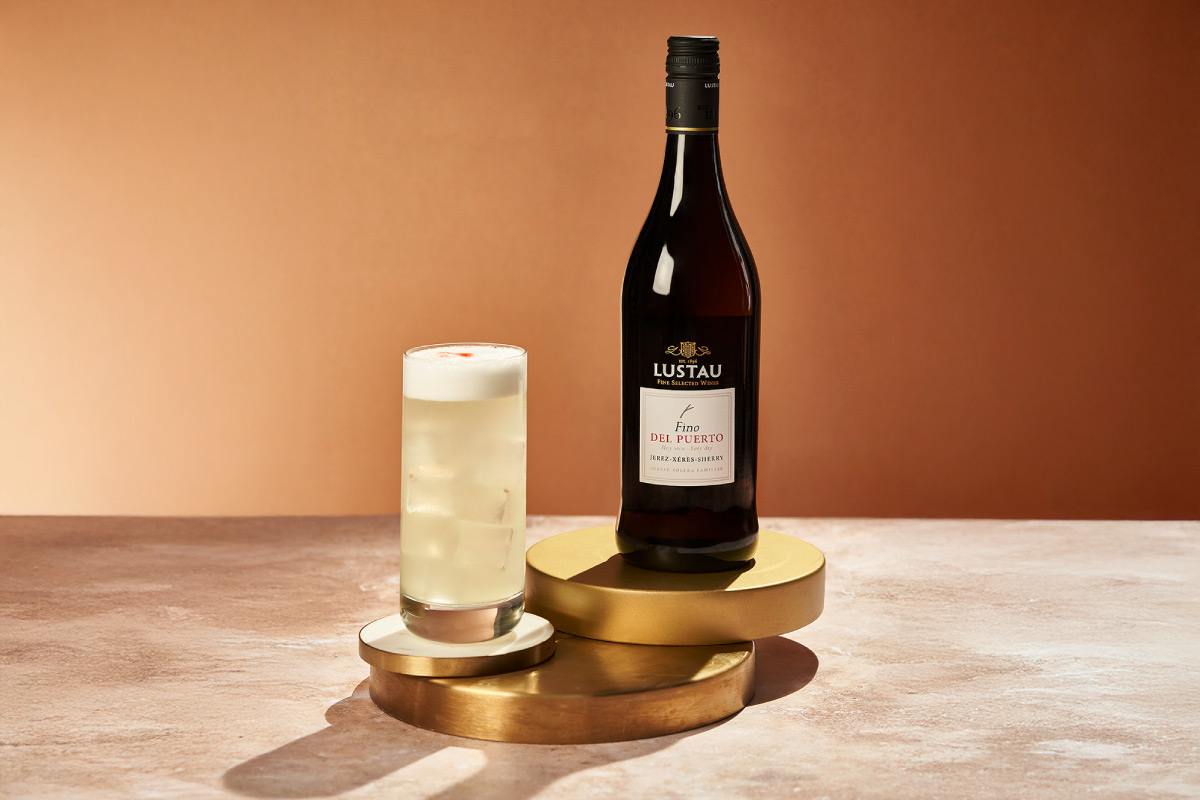
WHAT MAKES MANZANILLA THE LIGHTEST AND MOST DELICATE SHERRY?
Thanks to Sanlúcar’s steady humidity and cooler temperatures, creating a perfect mesoclimate for the “flor”, these indigenous yeasts grow thicker and remain active year-round. This, first of all, keeps the wine protected more thoroughly than in other regions. Secondly, interaction between wine and yeasts is more intense and consistent. These factors will lead to a very pale straw-colored wine with very low glycerine levels, moderate acidity, and extremely lively aromatics—fresh dough, fresh cut grass, raw almonds, and that unmistakable oceanic whisper. Manzanilla is, quite literally, the most lively and lightest expression of biological aging in the sherry universe.
THE WINEMAKING PROCESS OF MANZANILLA DE SANLÚCAR
The elaboration of manzanilla is a natural but precise, meticulous process that combines the action of “flor”, very specific climatic conditions, and time. Unlike other sherry styles, manzanilla follows a purely biological path, requiring very unique environmental factors with similar different tempo.
GRAPE SELECTION AND BASE WINE FERMENTATION
Like other dry wines from the Jerez region (such as oloroso, amontillado, palo cortado and fino) manzanilla is exclusively made from free run palomino grape must (“mosto yema”), a variety known for its immense versatility (hence the diversity of dry sherry wines expressions) and ability to express terroir. Palomino produces delicate yet versatile base wines offering a vast and diverse spectrum of personalities, identities.
Palomino is generally harvested in the middle of summer. After a gentle pressing with almost no contact with grape’s skins the free run juice undergoes fermentation, typically in stainless steel tanks, resulting in a dry, light white wine with an alcohol content of around 11-12% Abv.
FORTIFICATION AND THE PATH TO MANZANILLA
Once the wine is fully fermented and classified as ideal for biological aging, the base wine is fortified with a high quality, neutral grape spirit. Fortification process not only stabilizes the wine (promoting “flor” appearing on the surface of the wine), enhancing “flor” chances of survival. The fortification level is crucial, creating a comfortable, friendly environment for the “flor”, guaranteeing a consistent interaction with the wines in the solera system.
There is a major change in the base wine when it reaches a level of 11-12% abv. It is at this exact moment when the fermenting yeast changes its metabolism and starts taking alcohol, instead of sugar, and turning into the compound known as acetaldehyde. This is how “flor” yeast survives, adapts to a hostile environment, becomes stronger and rises to the surface of the wine, looking to capture more oxygen, and eventually creating the famous “velo de flor”. From this moment the palomino base wine will be lastly fortified up to 15% abv to create an even more aseptic environment for the “flor”. The wine becomes “sobretabla” and it is ready to be part of the Solera and Criaderas system.
THE SOLERA AND CRIADERAS SYSTEM IN SANLÚCAR DE BARRAMEDA
Manzanilla (and the majority of wines in the Jerez region) are aged in the complex and labor-intensive solera and criaderas system, the dynamic aging method created in the DO centuries ago. Younger wines are progressively blended with older ones, ensuring consistency and complexity unparalleled to the rest of the wine world. The solera and criaderas system is so attached to the region, that its popular image (showing long rows of centenary casks carefully stocked) is generally the first picture that comes to mind when thinking about a sherry bodega.
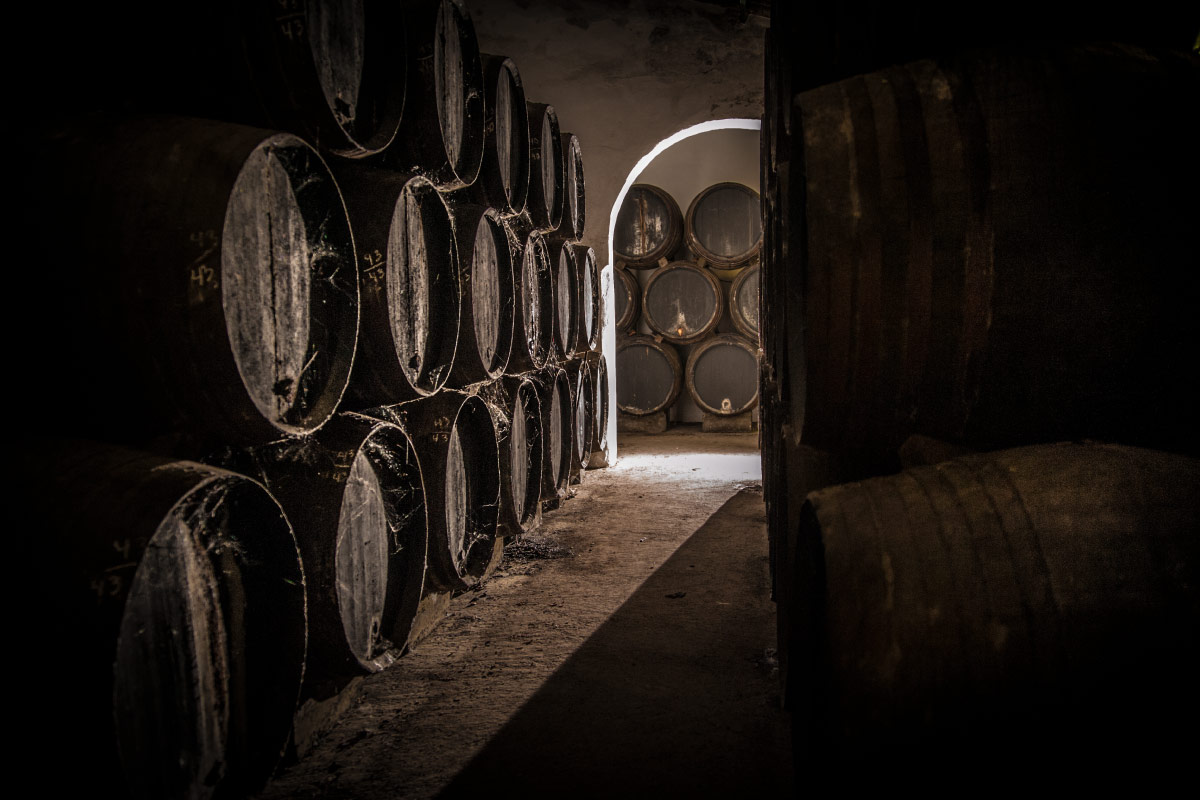
THE ROLE OF FLOR YEAST IN MANZANILLA’S UNIQUE AGING
“Flor”, the live biofilm, establishes this desired direct interaction with the wine. This particular veil of yeasts metabolises alcohol into acetaldehyde, the compound responsible for finding such amazing fresh, pungent notes in finos. However, there are more benefits of “flor” aging.
Yeasts not only consume alcohol, but they also take glycerol, oxygen, sugar, and acids contributing to an even drier, fresher, sharp personality. Besides, they will play a significant part once dead. “Cabezuelas”, the way we name the wine lees, are always kept in the barrel, going to the bottom, and releasing compounds of great importance: vitamins, proteins, etc. A wine that is remarkably complex in texture is just the consequence of a large concentration of “cabezuelas” in the cask and a character genuinely found in “manzanillas pasadas”.
HOW THE ATLANTIC CLIMATE SHAPES MANZANILLA’S CHARACTER
Sanlúcar’s proximity to the Atlantic plays a decisive role in crafting manzanillas unmistakable personality. Cool sea breezes (from the poniente) and elevated humidity levels create the perfectenvironment while also leaving a subtle imprint on the wine. Also, it leaves a subtle imprint on the wine. Manzanilla often carries delicate hints of salt, iodine, coastal herbs, sea spray thanks to Atlantic’s role in Sanlúcar mesoclimate.
THE BOTTLING PROCESS AND FINAL QUALITY CONTROL
After intensive aging this style of wine reaches its final stage in the cask. Capataces (sherry winemakers and foremen) assess its concentration, balance, acidity and complexity before bottling.
Some manzanillas may be bottled straight from the cask, The finished manzanilla is bottled with minimal or no filtration and treatment, to preserve its unique character and respect the genuineness of its identity. “En rama” wines guarantee wine’s personality can be enjoyed by anyone around the world at its most genuine, original conditions. Some other manzanilla may showcase a bolder character, being eventually turned into amontillado or set apart for continuing the same biological aging for an extended period of time to become manzanilla pasada.
En Rama wines are much more than wines bottled with minimal treatment. They have become wines for collectors thanks to their immense aging potential. Learn more about the revolutionary discovery Lustau made about En Rama wines.
KEY CHARACTERISTICS AND FLAVOR PROFILE OF MANZANILLA
AROMAS, TASTING NOTES, AND MOUTHFEELBEST COCKTAILS WITH MANZANILLA
This style is identified for its pale straw color, super dry palate, and pungent, vivid aromatic intensity. On the nose, manzanilla generally reveals notes of fresh bread dough, roasted almonds, green apple, dry yellow flowers, chamomile and a delicate briny background. The influence of “flor” is evident in its mouthfeel too, lending a slightly tangy, green apple-like character.
Manzanilla is very dry, crisp, and lively, with a light, vivid structure and refreshing acidity. It exhibits a savory, slightly bitter finish, characteristic of biologically aged wines, and a persistent saline minerality — a testament to its aging location.
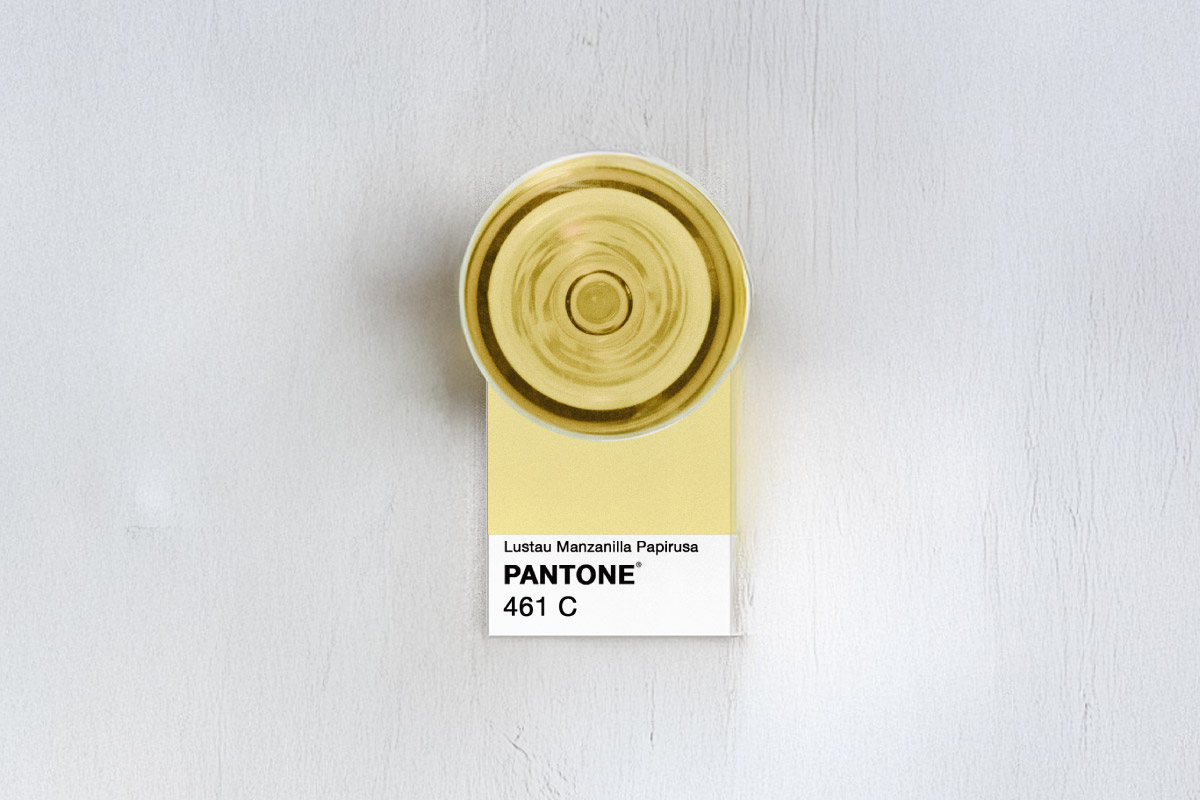
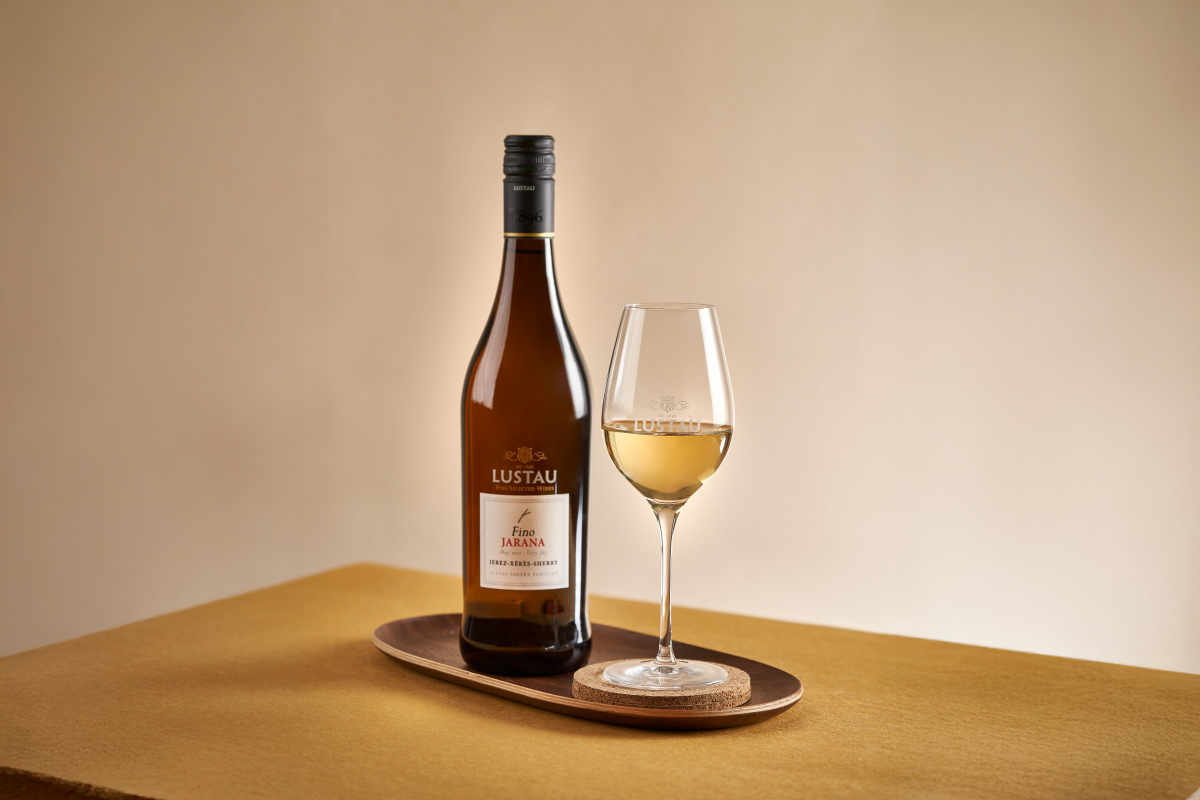
In contrast, amontillado begins its life as manzanilla, being agied under “flor”, but subsequently undergoes oxidative aging after the flor dies off. This dual aging process imparts amontillado with nutty, toasty, and deeper amber characteristics, distinguishing it clearly from the fresher, sharper profile of manzanilla or fino.
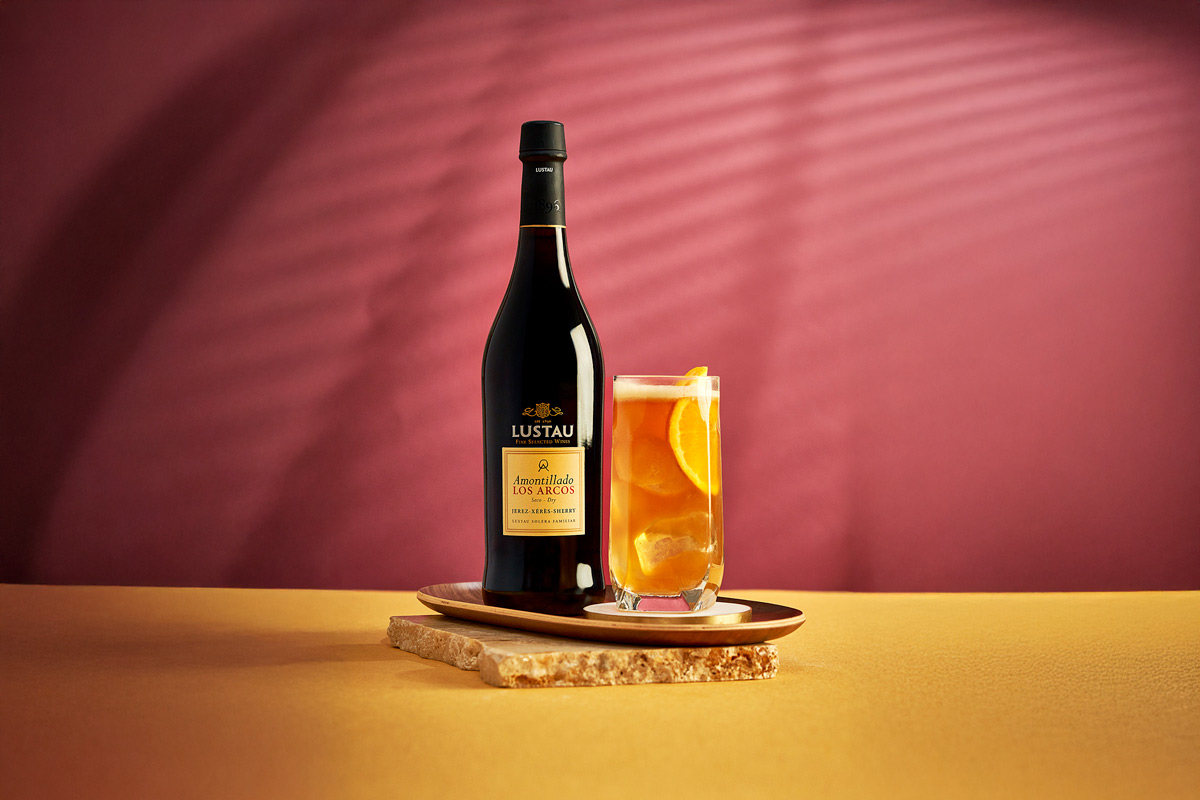
HOW THE COASTAL INFLUENCE GIVES MANZANILLA ITS SALINITY
Sanlúcar is a coastal city, one of the two towns in contact with the Atlantic Ocean the second being El Puerto, Sanlúcar is the only one that is in direct contact with a river, the Guadalquivir river. Sanlúcar is more moderate and oceanic of the three towns forming the time-honored sherry triangle. If Sanlúcar, El Puerto, and Jerez are compared here, great and influential differences will already be perceived in terms of levels of rainfall, and average humidity. The temperature is also very different since Sanlúcar is the city with the most moderate average temperature in the summer , and the same during the winter. Western winds (poniente) winds can be found here at a much higher rate than southern or eastern winds, creating a direct contrast with El Puerto, which has a combination of both major and most prominent winds of the region: poniente and levante.
LUSTAU MANZANILLA COLLECTION
Lustau is respected for its diverse and versatile range of styles organized in different collections designed under certain concepts, profiles; suited for any palate. Lustau Manzanilla collection explores different expressions of this biological wine, showcasing variations in aging, locations, and complexity.
Despite all expressions are defined by Lustau’s accessible style each bottling provides different insights into the craftsmanship behind amontillado style and its evolving character over time.
Lustau 3 en Rama Manzanilla de Sanlúcar
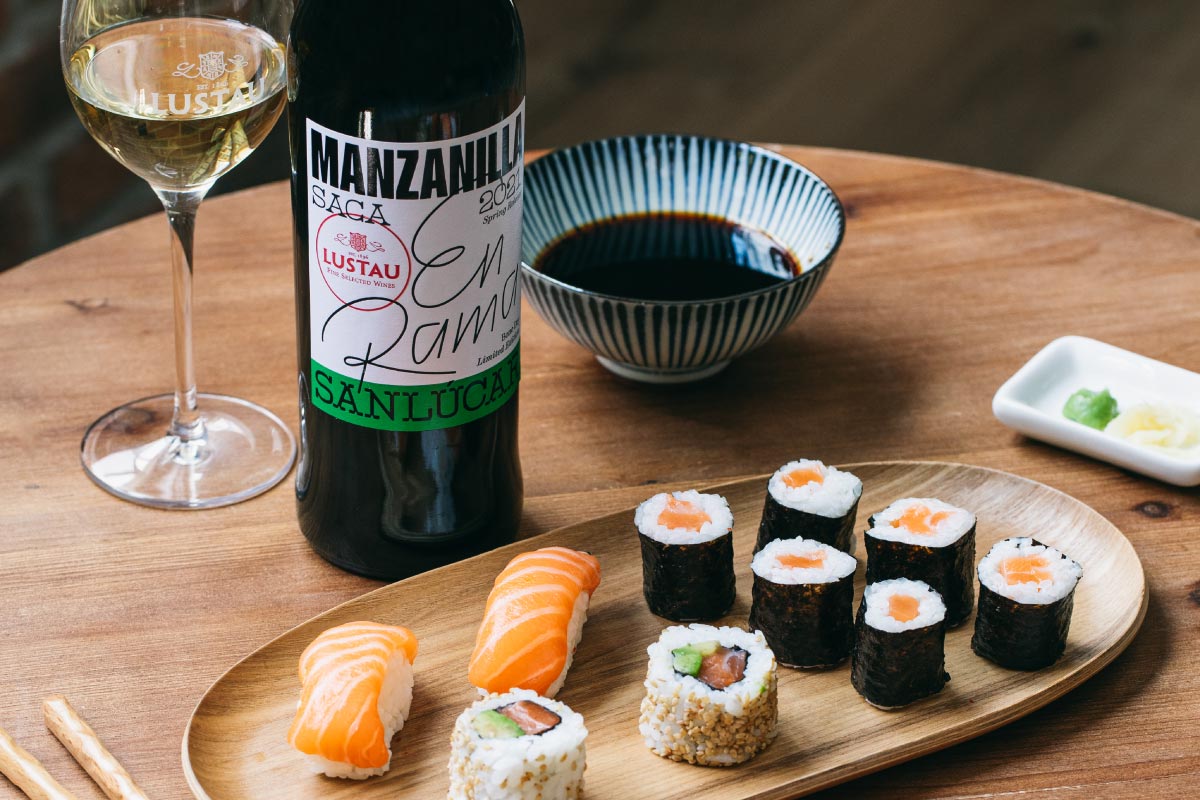
Lustau Almacenista Manuel Cuevas Jurado Manzanilla Pasada de Sanlúcar
FOOD PAIRINGS AND SERVING SUGGESTIONS FOR MANZANILLA
Manzanilla culinary applications can be as varied as they are exciting. Due to its crisp acidity, very dry palate, and lively character manzanilla is an ideal companion for a broad range of cuisines, flavors and textures.
This style of wine should be served chilled, ideally at a temperature of 7–9°C (44-48°F) to enhance its aromatic personality. Use a white wine glass, with a proper bowl, to allow the wine to breathe and express its aromatics.
Once opened, manzanilla can be stored for up to two weeks if properly sealed and kept in the refrigerator, (although its vibrant character is best appreciated within the first few days). Unopened bottles should be stored upright, away from direct sunlight and temperature fluctuations, to preserve their quality.
Manzanilla’s lively expressiveness extends beyond the dining table or the cocktail glass, making it a perfect wine for a variety of occasions and moods. Its unparalleled light and vivid personality allows it to shine as a sophisticated wine to pair with raw fishes or the base ingredient in a low abv cocktail like a Bamboo. Ideal for big social gatherings, fun moments, or even as a pairing to music—think calypso, Caribbean world, ragtime, easy classical—it invites you to explore its genuineness in any context.
Whether savoring it with food, enjoying it as part of a self-crafted cocktail, or sipping it during a quiet evening of watching your favorite show, manzanilla transforms every moment into an experience of refined indulgence.
And for those looking to explore creative and unexpected pairings, discover how Lustau Manzanilla collection creates a twist in sensations with everyday dishes (or some other more suited to a self-treat) with these inspiring combinations. Click on the visuals to discover more about the pairing and cocktail ideas!
BEST COCKTAILS WITH MANZANILLA SHERRY
Manzanilla’s vibrant acidity and fresh character also make it a compelling ingredient in cocktails.
FREQUENTLY ASKED QUESTIONS ABOUT MANZANILLA
What Makes Manzanilla Different from Other Sherries?
Manzanilla de Sanlúcar is distinguished by its biological aging under “flor”, resulting in a pale, dry, and elegant wine. Unlike amontillado or oloroso, which undergo oxidative aging, manzanilla retains a sharp, saline freshness and a lower alcohol content.
Can Manzanilla Be Aged Further After Bottling?
Contrary to traditional advice suggesting that this wine should be consumed shortly after bottling to preserve its fresh and flor-driven character, recent insights reveal that well-crafted finos, especially those bottled en rama, can develop greater complexity and depth with bottle aging. The minimal intervention allows the wine to evolve in the bottle, transitioning from its initial vibrant and saline profile to a richer, more nuanced expression over time. As the “flor” influence diminishes, the wine may exhibit characteristics reminiscent of amontillado, with enhanced notes of dried fruits, nuts, and herbs.
This evolution is not indicative of spoilage but rather a transformation that offers a different, yet equally enjoyable, tasting experience. Some en rama manzanilla have been noted to age gracefully for several years, gaining complexity and a rounder mouthfeel.
What Are the Best Ways to Enjoy Manzanilla?
Manzanilla’s vibrant character makes it a versatile companion for various occasions. Its crisp, saline profile pairs excellently with raw seafood dishes like sashimi or ceviche, and it serves as a refined base for low-ABV cocktails, such as a Fino & Tonic or a Bamboo. Beyond the dining table, manzanilla complements social gatherings and even musical experiences—think calypso, Caribbean rhythms, or light classical tunes—enhancing the ambiance with its lively essence.
Is Manzanilla Considered a Dry or Sweet Sherry?
Manzanilla is unequivocally dry, containing less than 1g/L of residual sugar. It is one of the driest style of sherry wine (together with fino), ideal for those who prefer crisp, savory wines.








